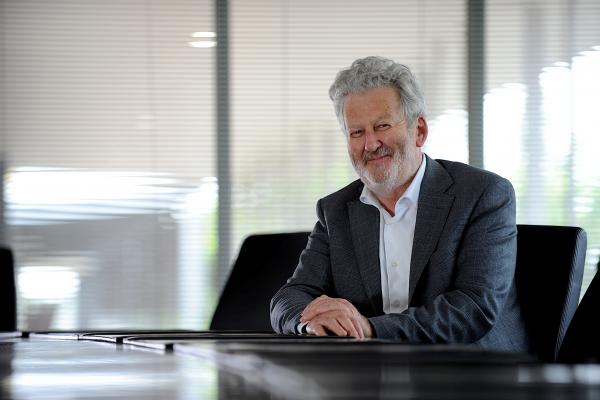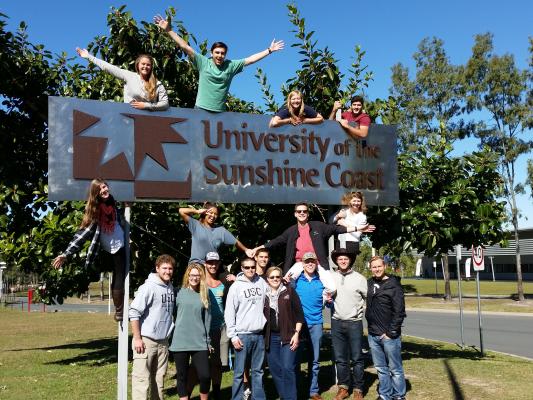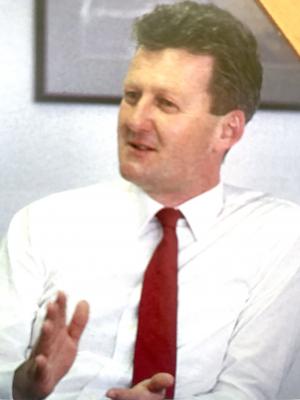Professor Robert Elliot retired from the University of the Sunshine Coast last month after having guided its international student program from infancy to significant player in Australia’s third biggest export industry. Then he spent the last five months of his quarter century career at USC plotting its survival. He spoke with Phil Jarratt.
Before we start this interview, can we get a less corporate shot of you, maybe interacting with international students?
I never had much to do with them. My job was to get them through the door, to get their money (laughs). I hope that doesn’t sound mercenary, but the commercial aspect was the key driver.
You started at USC as founding Dean of Arts back in 1995. How did that morph into you leading the internationalization program?
Sunshine Coast University College, as it then was, had its first batch of students in 1996, and by the end of ’97 I’d begun a conversation with the University of Technology Sydney which had an outfit that provided English language training for international students before they went into UTS degree courses. We were talking about setting up a joint venture on the Sunshine Coast, and that was really my first dabble into the international area but it didn’t happen. Instead we established our own English language college which I then looked after. It went well from the start and it became obvious that USC, like other Australian universities, needed to get involved with international student recruitment as an important way of supplementing our revenue, so even though I remained Dean of Arts, I also got involved with student recruitment. I started doing quite a bit of travelling, attending recruitment fairs, visiting potential partner universities, establishing relationships with student recruitment agents. By 2004, this represented a lot of what I was doing, so USC created the role of Pro Vice-Chancellor International, to which I was appointed in 2005. I’ve been in some version of that ever since, as well as acting in other roles from time to time.
You timed your run rather well, with education as an export product really kicking in from the turn of the century, but the Group of 8 (major universities) seemed to be getting the biggest slice of the pie. Was it difficult for a provincial uni to break in?
Well, it’s true that the Group of 8 were getting most of it, along with some second tier unis like UTS and QUT, but the issue for USC was that it was a very new university with no international presence, so we decided to play to the strengths of our geographical location, the Sunshine Coast, and that became key to our pitch. The students it appealed to were mainly those who wanted a one-semester experience of Australia, preferably in an attractive part of it.
Could you use the same pitch for longer-term full degree students?
Yes, in some markets. In the early days most of our internationals were from Europe and North America. In fact we had a Canadian boom for a while, but around 2008 we began recruiting for full degree programs from South Asia, Japan and South Korea. While we didn’t lose our connections with Europe and North America, and they remain an important part of the international student body, the balance began to change. In 2019 our top five countries were India, Nepal, China, Germany, United States, with Norway probably number six.
I’m surprised that China wasn’t number one.
Actually, the majority of our Chinese students were in China, not here. We have an agreement that involves us delivering our MBA program into China. But the other markets all come to the Sunshine Coast.
How did that happen?
I think it was just a series of happy accidents. We were approached by an Australian agent who was looking for Australian universities to partner with China at a certain price point, which put them at our level and they liked our product.
We don’t usually think of education as a product, and I’m having difficulty seeing you cold calling universities or going to trade shows. Walk me through the process.
Yes, I went to recruitment trade shows, but that wasn’t our main activity. There are also student fairs, which are geared towards students wanting to study internationally, and there is a lot of direct engagement with potential partner universities. My colleague, who is now our international director, spent weeks at a time driving around Europe and America cold calling institutions. I didn’t do that. Greg paved the way (laughs). But it was a necessary step to establish our name in these markets. Take Germany, for example. Greg found us a dozen or so partners there at the start, and the word got around that we were easy to deal with and we offered a great experience, so now we have more than 40 German partners.
When the market shifted from West to East, did you have to come up with a different recruitment strategy?
China is very brand conscious, and we knew it would be hard to crack, so the happy accident I described was very helpful. We also established relationships with third tier Chinese universities who would recruit students who would do two years study in China and get a one-year credit towards a degree at USC, so that created a steady trickle. The other area in which we’ve had success there is our Bachelor of Nursing Science. The motivation there is that it’s a pathway to residence in Australia. That’s also the case for India and Nepal, the product is a pathway to permanent residence.
And a job as an Uber driver?
A lot of our students, particularly in the business faculty, do find themselves doing that, but our nursing students seem to get jobs in their chosen profession. For India and Nepal, most of our business comes through agents who often have branch offices in Australia, so once you develop a relationship the momentum grows, but that’s not without risk. There are various penalties for universities who make offers to applicants who don’t meet visa requirements. Home Affairs has a university risk index and if you move in the wrong direction, they’ll make it more difficult for you to recruit. Fortunately, we’ve never strayed into the danger zone.
What has Covid done to USC’s international program, short and long term?
It’s meant that in second semester this year we recruited zero students from offshore. In a normal year we would have recruited around 700 commencing students from offshore, and each of those would have been paying between $10,000 and $15,000 for that one-semester experience, depending on what they were studying. But there are a lot of international students still in Australia, and we ended up with about 230 who were recruited here, almost all of them in nursing. That surprised us, we were projecting much lower numbers. We also thought that the crash in the casual job market would affect their capacity to pay fees, but we were wrong in both cases. For first semester next year, I don’t believe the borders will be open, so there’ll be no offshore recruiting and the potential for onshore recruiting will have diminished as the pool shrinks and various universities start discounting. Our best guess is we’ll have 100 internationals commencing, but what happens in second semester? Will the borders be open? I’m pessimistic, I think if they are open at all it will be in a very restrained way, and Covid is rampaging through key markets like India and the US. I don’t think there will be a noticeable recruitment recovery until 2022.
What does this do for your budgets?
In 2019 international students represented 18 percent of our revenue, and we’re still reaping the benefits because last year’s commencements are still with us, but by the end of the year many of them won’t be. Then it’s going to be a squeeze. One thing that could happen is that domestic enrolments might pick up, as they have in second semester this year, but whether that will continue is the question. Our saving grace is our new Moreton Bay campus where we have guaranteed Commonwealth funding for 2021 and ’22, provided we can get our student numbers, and I’m confident that will happen.
Looking at the financial ramifications across the university sector, the biggest issue is the fact that the Group of 8 is incredibly dependent on international students, and even more dependent on China. That might be problematic.









